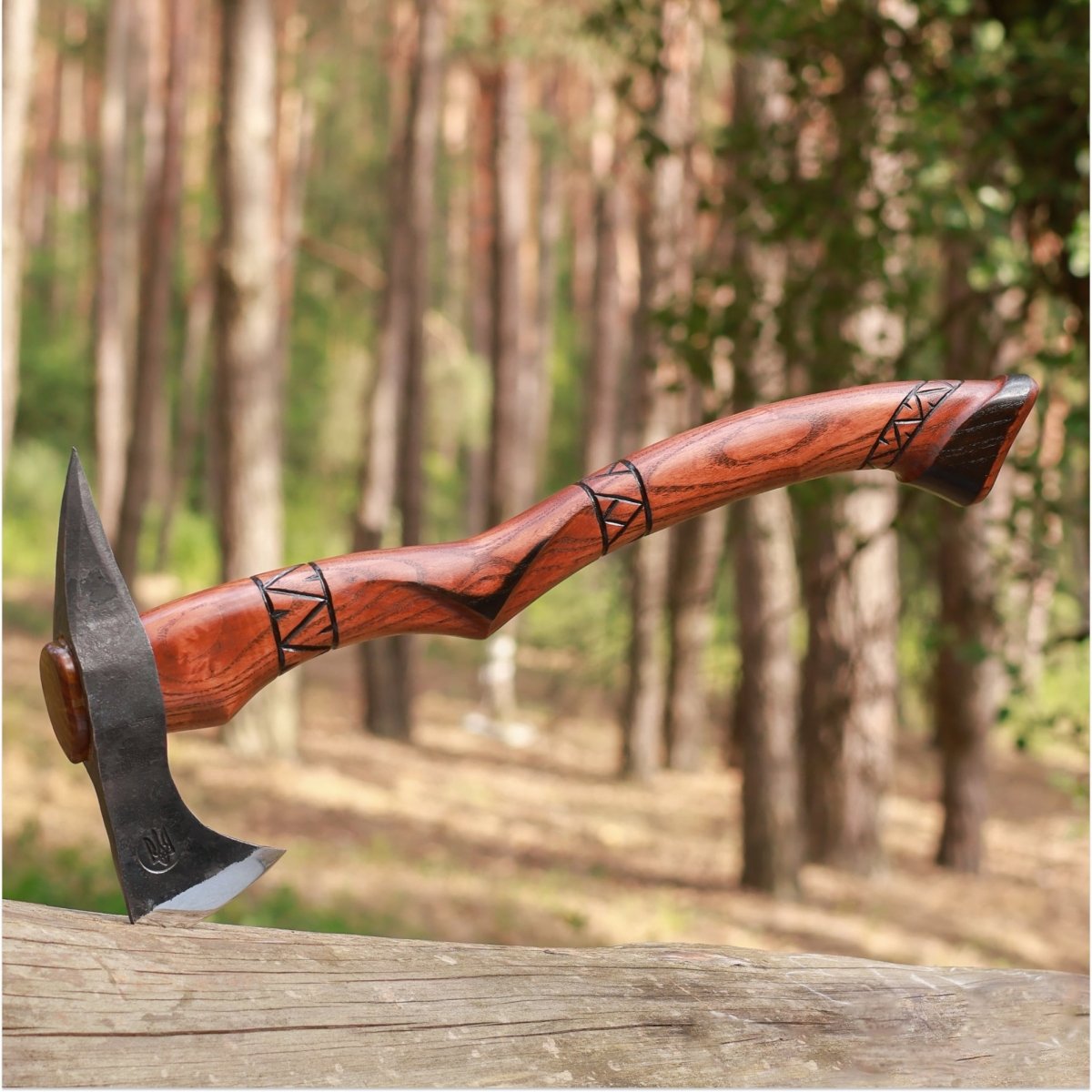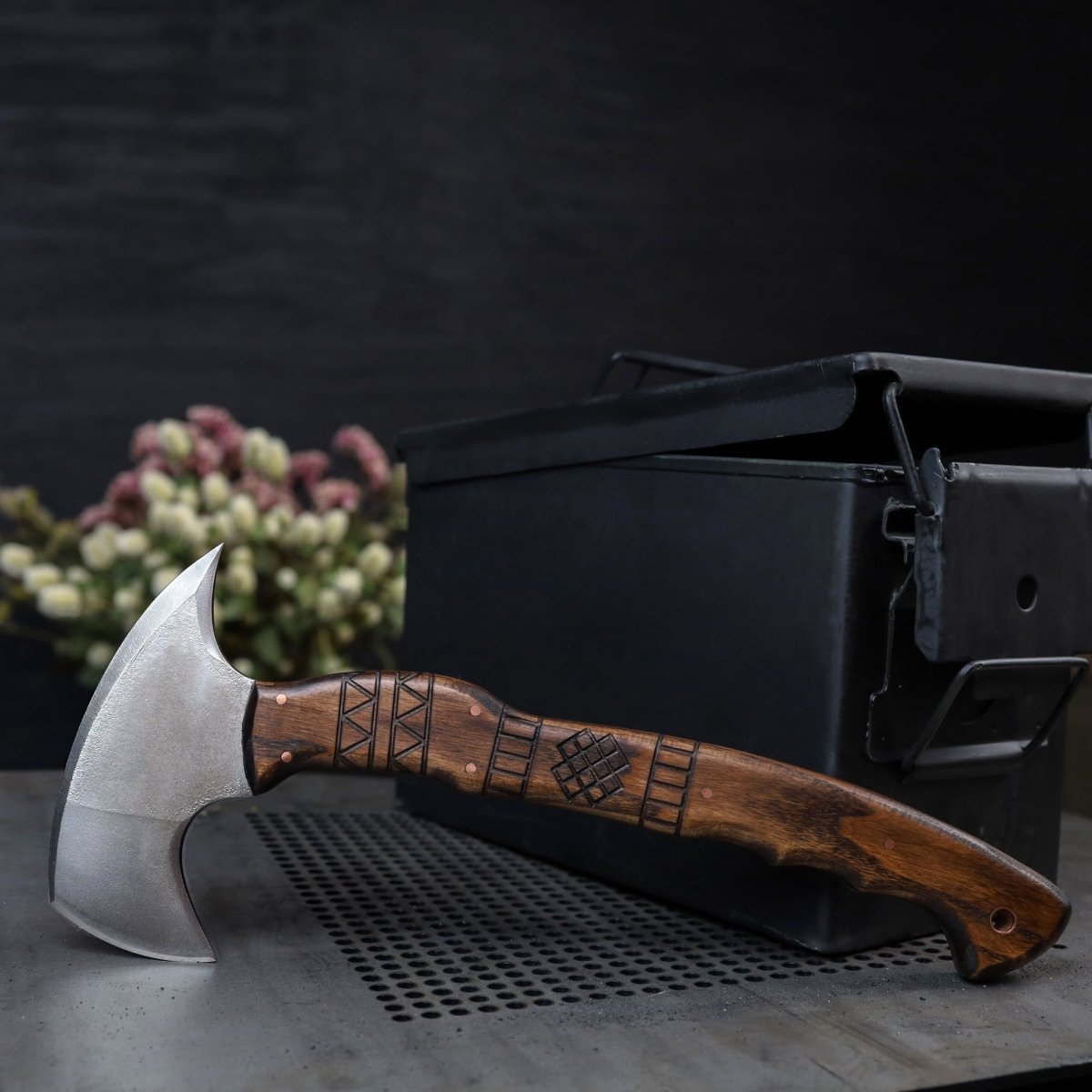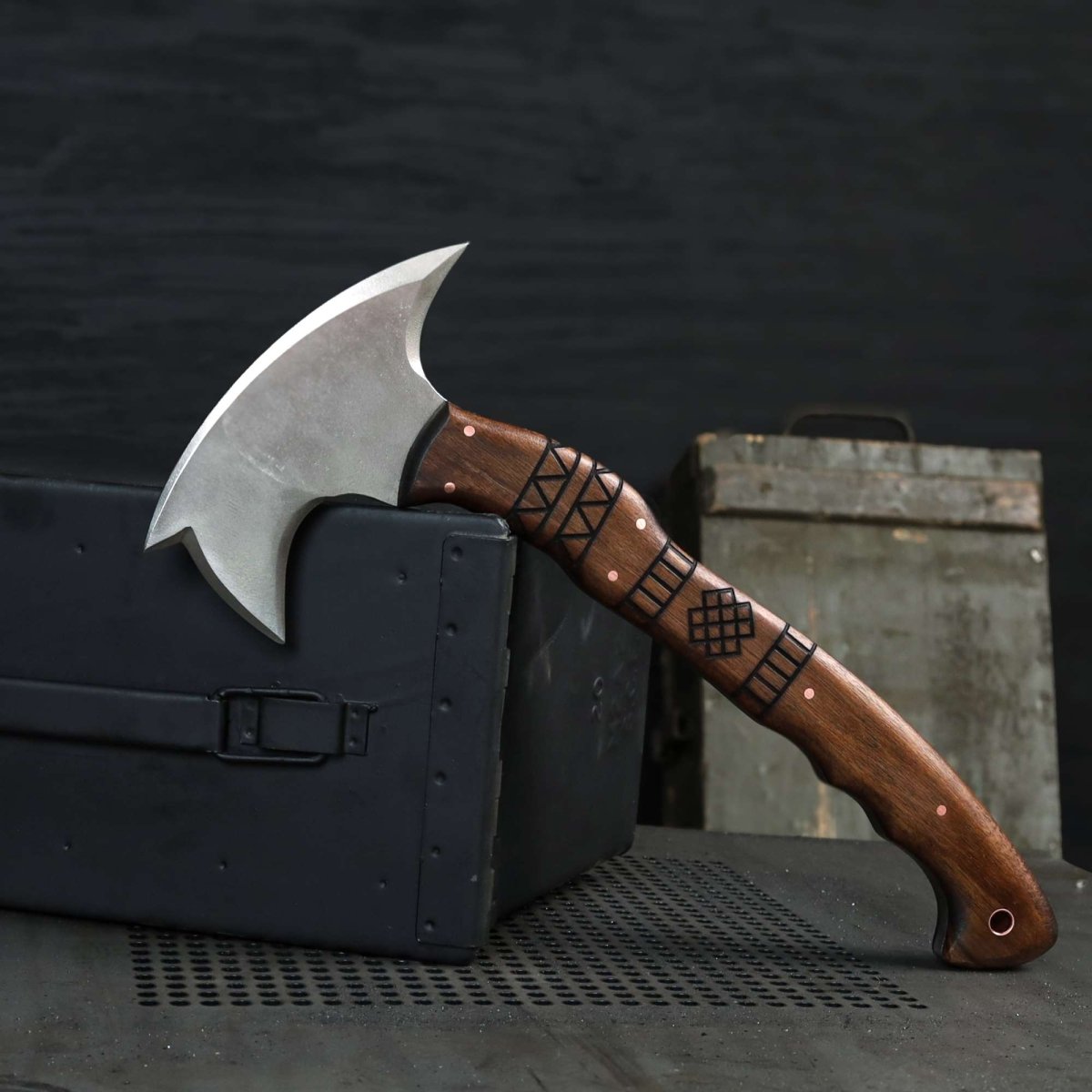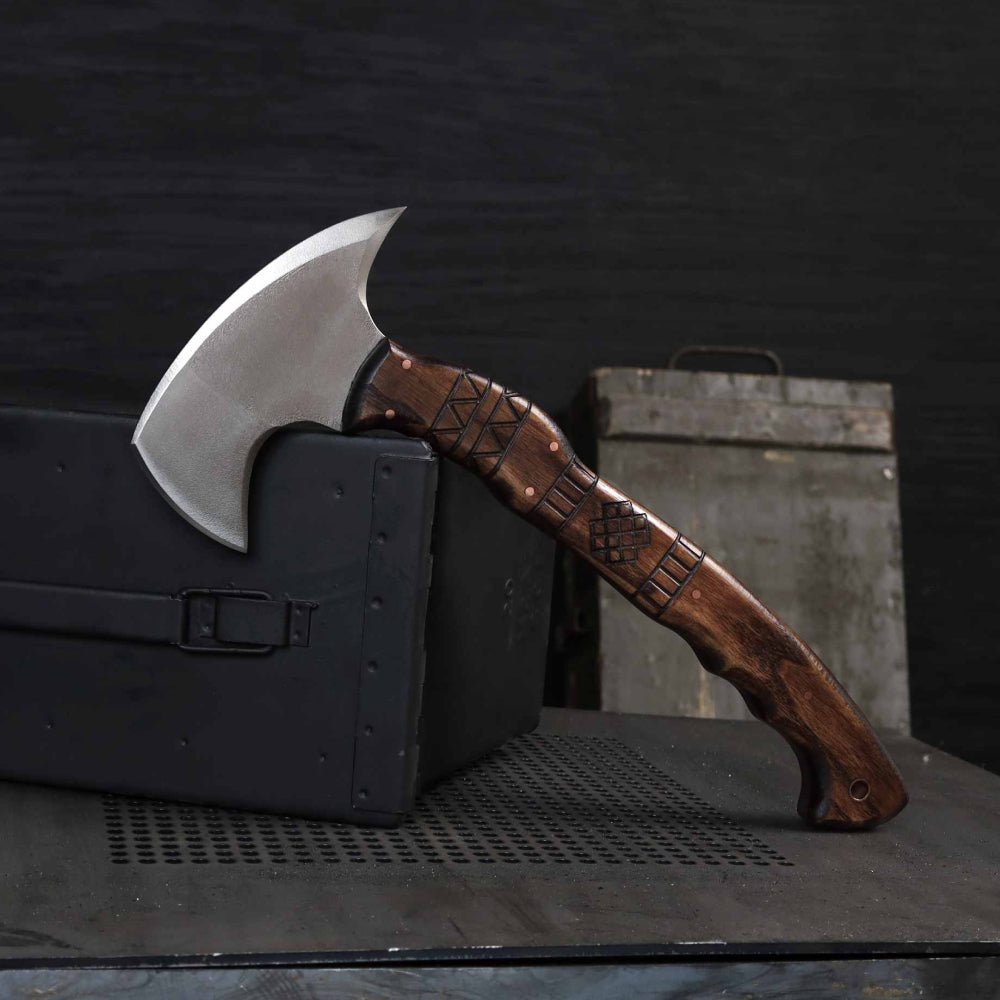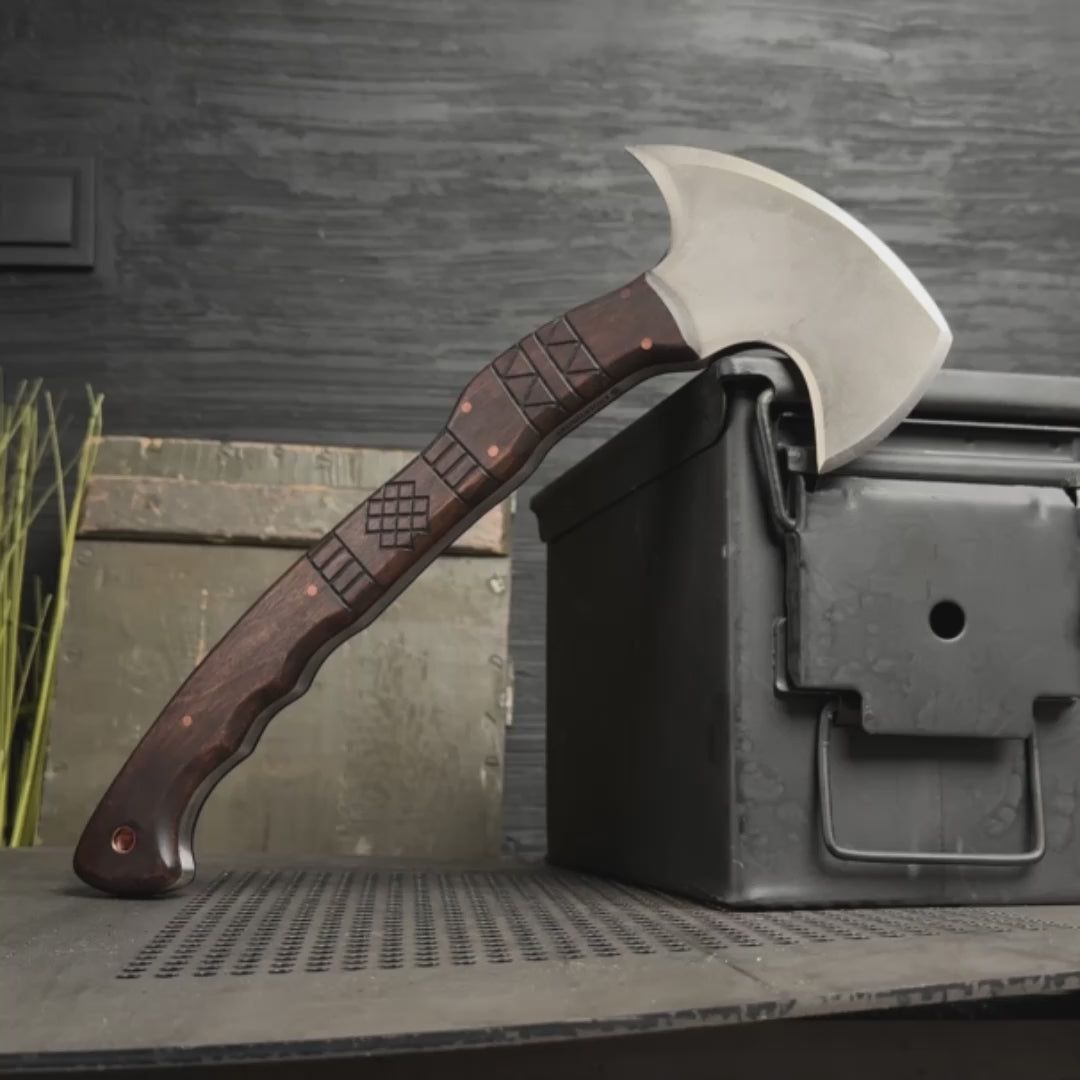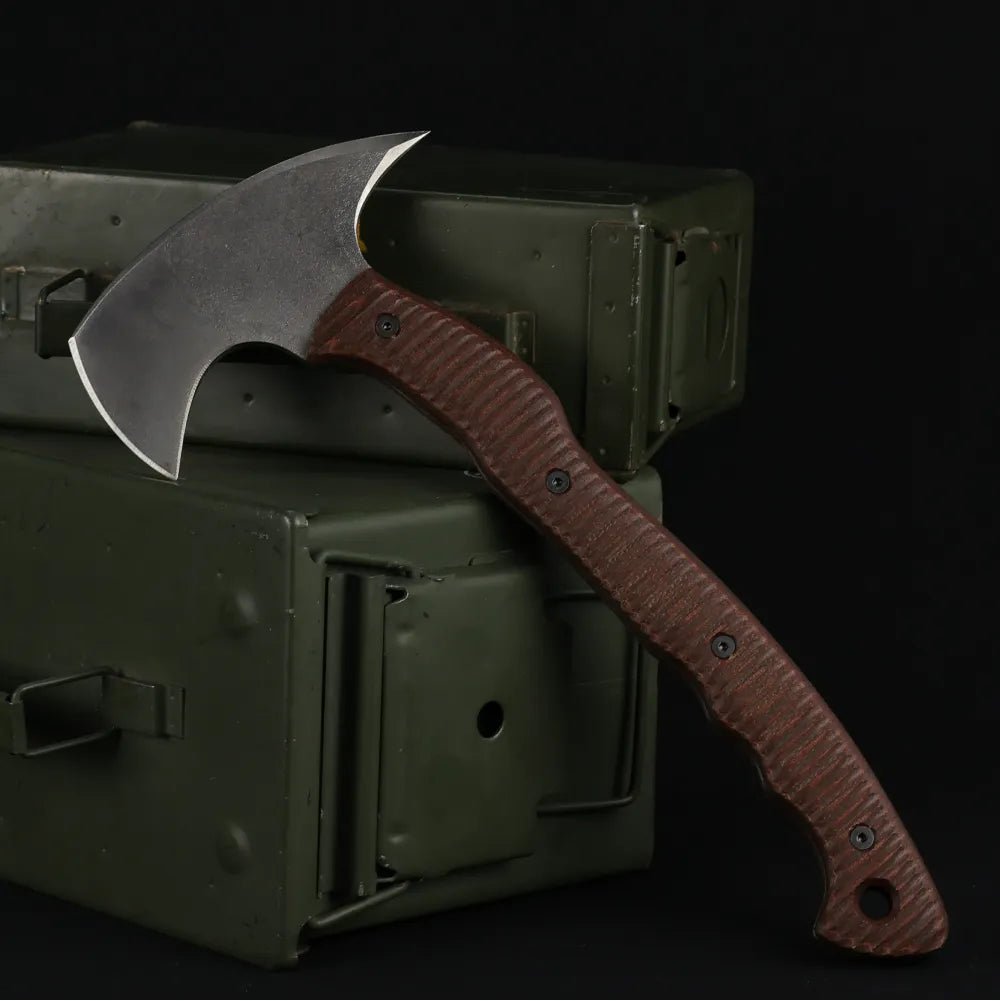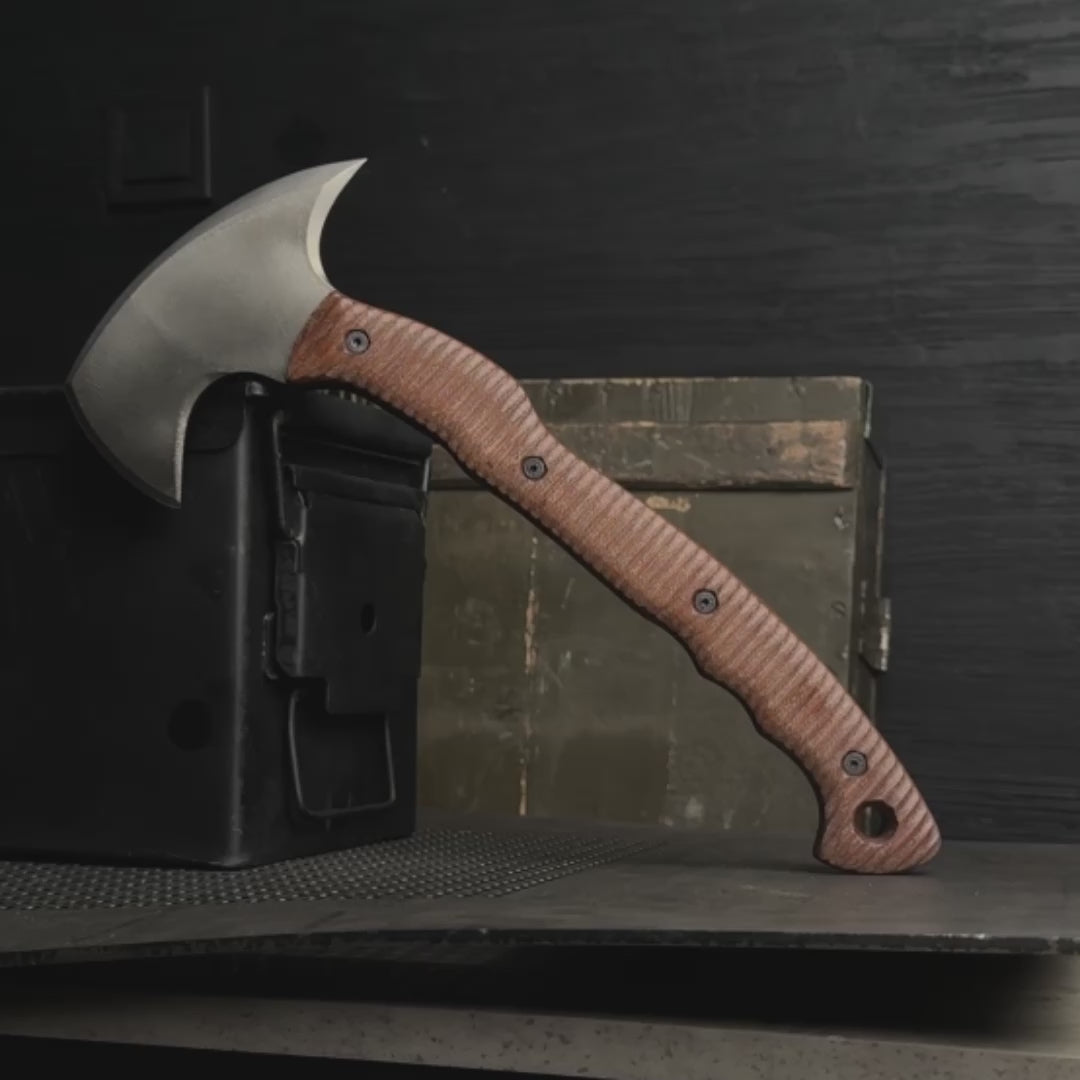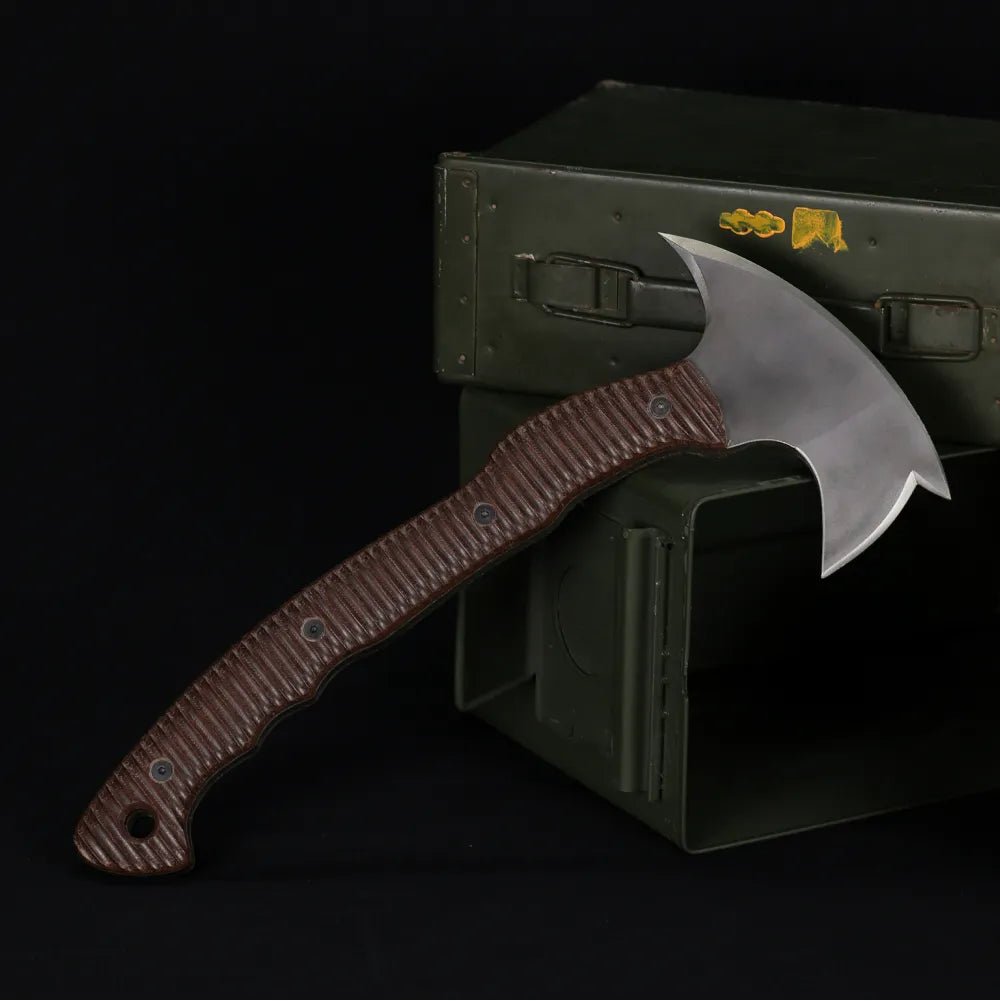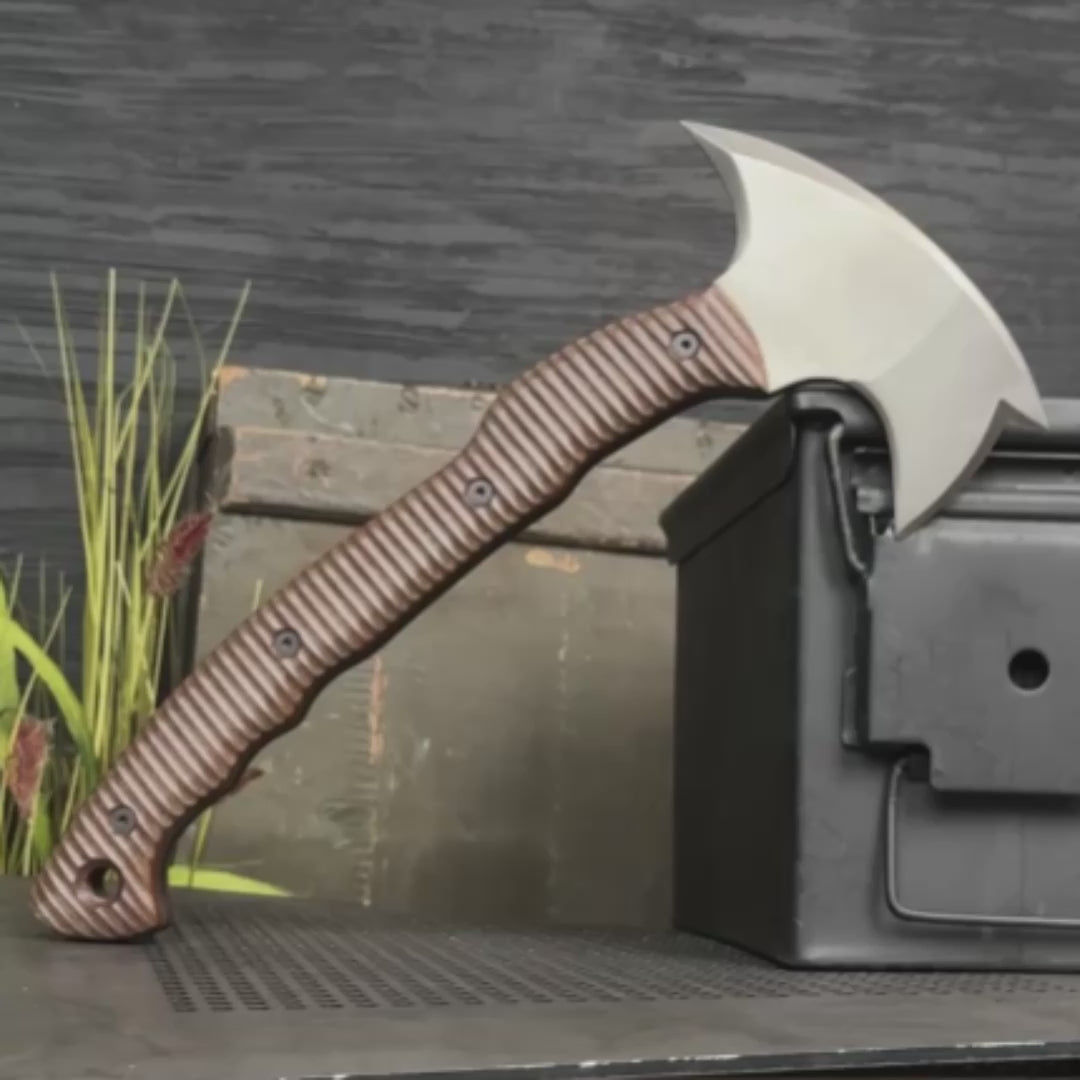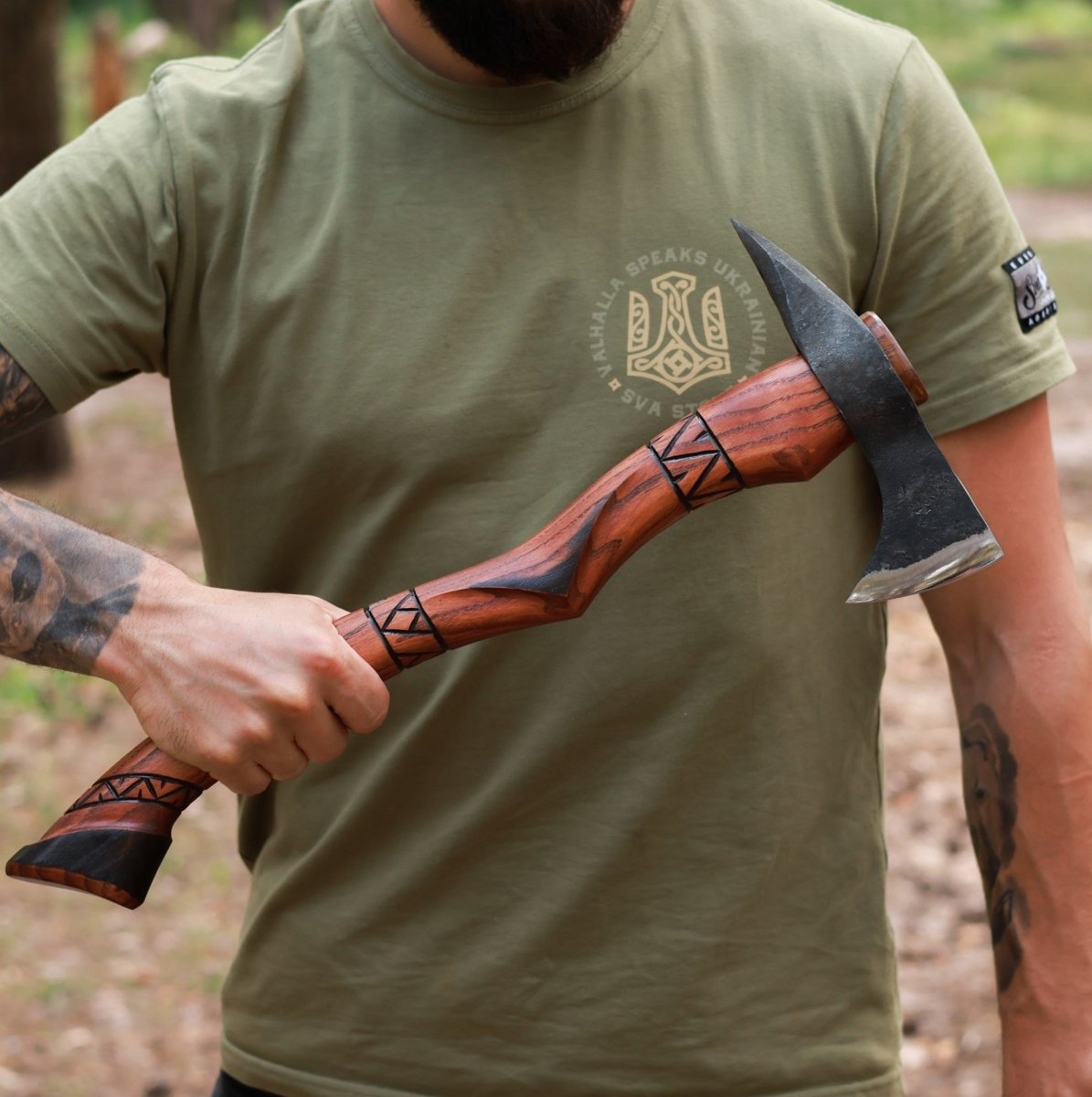
Tactical Tomahawk vs. Traditional: What’s the Difference?
Tomahawks have come a long way from their origins as symbols of Native American craftsmanship. Once vital for survival, hunting, and warfare, they have transformed into versatile tools appreciated worldwide for outdoor recreation, survival training, collecting, and even tactical operations. What makes them truly fascinating is how they have split into two distinct categories in the modern era: traditional tomahawks and tactical tomahawks. While both trace their roots to the same concept, each has evolved to meet very different needs.
Design & Aesthetics
Traditional tomahawks carry the soul of history. With forged high-carbon steel heads and ash wood handles, they embody balance, elegance, and simplicity. Many are adorned with hand-carved runes, Nordic or Celtic-inspired engravings, and leather wraps that enhance grip while adding a sense of heritage. These designs are not just decorative – they connect the tool to centuries of craftsmanship and symbolism. Holding one feels like holding a piece of history.
Tactical tomahawks, in contrast, represent modern engineering. They feature bold, aggressive lines and minimalist, functional designs. Handles are often made from polymer composites, offering unmatched durability and resistance to wear. Heads are precision-cut, sometimes with added spike elements, pry bars, or hammer backs, creating multipurpose tools. Tactical tomahawks often look as if they belong in the hands of a soldier or survivalist – sleek, efficient, and intimidating.
Materials & Construction
The choice of material defines each tomahawk’s purpose. Traditional tomahawks typically use natural elements like hardwood handles (ash, hickory, or oak) paired with forged steel heads. Their weight and balance make them excellent for throwing, light chopping, or ceremonial use. The warmth of wood and authenticity of forged steel create a sense of tradition that modern enthusiasts value.
Tactical tomahawks are designed for resilience and strength. Polymer or fiberglass-reinforced handles withstand extreme impact, temperature fluctuations, and moisture. Steel heads are often coated with black oxide, Cerakote, or similar treatments for corrosion resistance. These tomahawks are made to endure punishing environments – from breaching doors to clearing debris in survival scenarios.
Functionality
This is where the two paths of the tomahawk become most distinct. Traditional models are known for balance and versatility. They excel in throwing competitions, reenactments, and bushcraft. Collectors love them for their artistry, while outdoorsmen appreciate their straightforward reliability. Their design makes them feel like an extension of the hand – natural, comfortable, and precise.
Tactical models are purpose-driven and loaded with features. In survival or combat scenarios, they can chop, pry, hammer, and even break glass. A tactical tomahawk is not just a blade – it’s a multipurpose tool ready for emergencies, whether in the wilderness or urban environments. Their rugged construction ensures they perform under pressure, where failure is not an option.
Use Case & Personality Fit
Choose a traditional tomahawk if you value history, craftsmanship, and artistic detail. It's the right choice for collectors, outdoorsmen, or fans of Viking-inspired gear.
Choose a tactical tomahawk if you need a rugged, functional tool for extreme environments. It’s built for those who prioritize utility, performance, and tactical readiness.
Find Your Fit
At AncientSmithy, we offer both traditional and tactical tomahawks to suit every lifestyle. Our traditional tomahawks feature hand-carved wooden handles, rune engravings, and forged steel heads crafted with timeless methods. Our tactical models push performance to the limit with composite handles, spike elements, and advanced steel treatments for maximum durability.
Whether you’re building a collection, preparing for the wild, or searching for a bold, meaningful gift, there is a tomahawk made for you – one that combines strength, heritage, and purpose.


